Hydraulic Cylinders
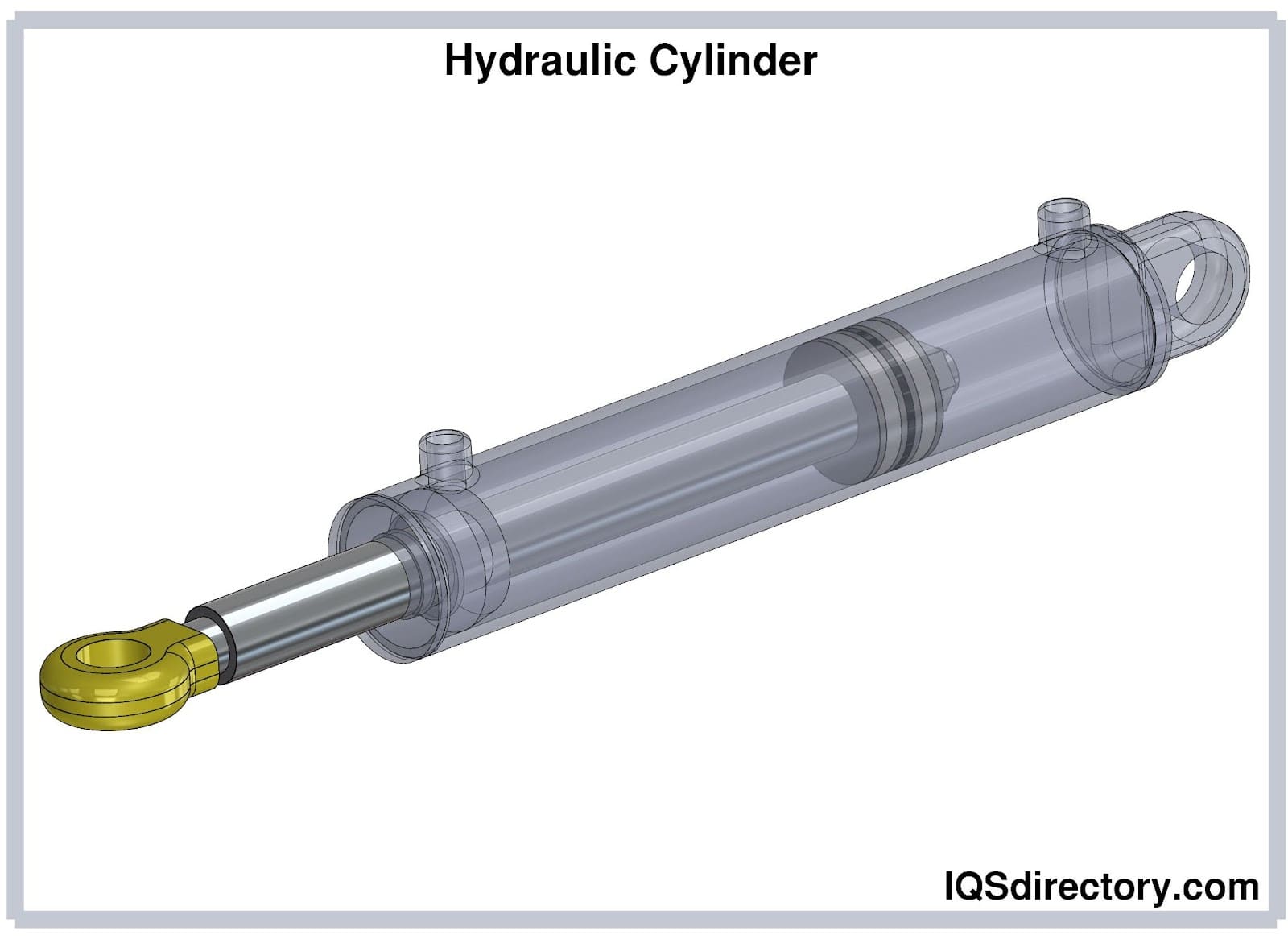
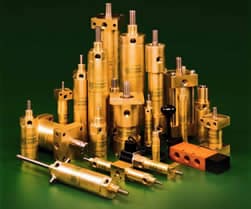
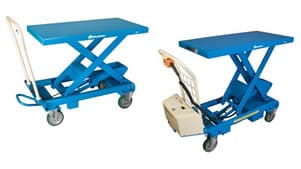
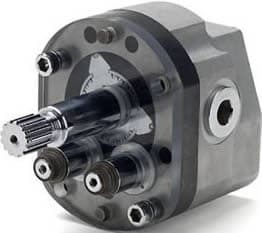
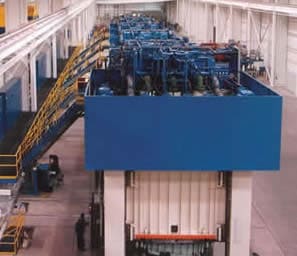
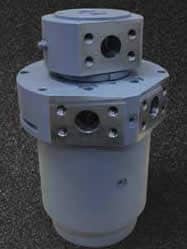
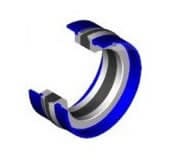
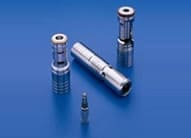
Hydraulic systems work with the help of force and fluid. Specifically, they work when force, or pressure, is applied to a fluid, which causes energy to transfer from one area to another. Inside these systems, the fluid, which is typically an oil, is controlled either directly or automatically by control valves. Fluid is distributed through tubes and hoses. Hydraulic systems are very powerful.
The first hydraulic equipment ever built was the hydraulic press. It was patented in 1795 by the British inventor, Joseph Bramah. Hydraulic power was first used in England for metal forging, machinery operation, elevator operation, canal lock operation and bridge section rotation. Despite the early life of hydraulic equipment, it was Harry Franklin Vickers, an American inventor, who was named the "Father of Industrial Hydraulics" by ASME. Over a century later, his most famous invention was the balanced vane pump, which is a kind of hydraulic pump. However, he also invented the first hydraulic power steering system. His inventions were important to mechanics, machining and automotives.
Today, the equipment and systems that harness the power of hydraulics are typically high-powered and heavy duty. Nevertheless, they are quite versatile. Examples of common hydraulic equipment include: hydraulic presses, hydraulic pumps, hydraulic motors, hydraulic cylinders and hydraulic lifts. A hydraulic press generates compressive forces and acts like a mechanical lever. Hydraulic pumps supply fluid to larger hydraulic systems. Next, hydraulic motors convert hydraulic pressure and flow into torque and rotation. They power systems like mixer and agitator drives, plastic injection machines, metal shredders, cranes, military vehicles and more. Meanwhile, hydraulic cylinders offer unidirectional force. They‘re common components of engineering vehicles, construction equipment and manufacturing machinery. Finally, hydraulic lifts are used to raise, lower, support and move heavy objects or work surfaces.
Modern hydraulic equipment is popular in a number of industries, including: material handling, construction, roofing, masonry, automotive, aviation and manufacturing. In material handling, construction, roofing and masonry, hydraulic equipment is used with components like lifts, bulldozers and cranes. Meanwhile, in the automotive and aviation industries, hydraulic equipment is used for power transmission and braking applications. Finally, in manufacturing, hydraulic equipment assists in assembly and automated process.
Hydraulic equipment requires the assistance of many different supplies, such as actuators, accumulators, filters, tubes and valves. They are held together with accessories like seals, connections and fittings. To make sure that their systems will run safely and effectively, manufacturers construct hydraulic equipment and hydraulic supplies from materials that perform well under pressure. Among these materials are rubber, woven wire, stainless steel, cast iron, brass and more. Unlike non-hydraulic equipment that provides similar services, hydraulic equipment requires few or no mechanical levers and gears. This is another reason that they are so widely used.
To learn more about hydraulic equipment and supplies, please read the sections below. They provide insight into many individual hydraulic components. To purchase one of these components, reach out to one of the corresponding manufacturers listed in that same section. All those who partner with IQS are experienced and reliable.
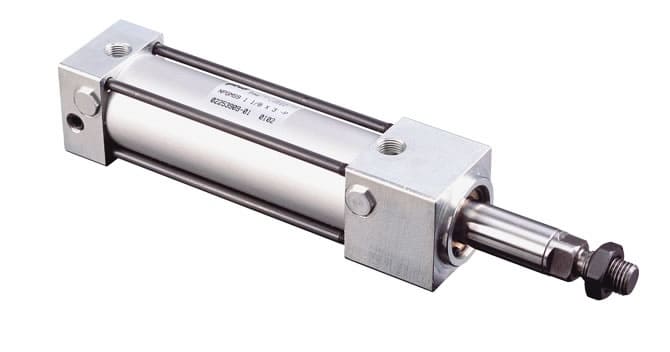 Hydraulic cylinders, also known as linear hydraulic motors, are mechanical actuators. Their goal is to convert hydraulic energy from pressurized fluids into usable mechanical energy. This mechanical energy can then be used to manipulate the movements of machine attachments and linkages.
Hydraulic cylinders, also known as linear hydraulic motors, are mechanical actuators. Their goal is to convert hydraulic energy from pressurized fluids into usable mechanical energy. This mechanical energy can then be used to manipulate the movements of machine attachments and linkages.
All cylinder components are composed of a barrel, a cap or base, a head, a piston, a piston rod, seals and seal glands. The barrel is considered the cylinder body and exists to hold pressure. The cap exists to both enclose the pressure barrel at one end and perform mounting duties. Manufacturers secure the cap to the barrel via bolts, tie rods, welding or threading. They also place an o-ring between the barrel and the cap (except when the cap is welded). The head encloses the barrel from the opposite end. It features a static seal and connects to the barrel via bolts, tie rods or threading.
Hydraulic cylinders are used in the aerospace, agriculture, automotive, aviation, construction, machining, manufacturing, military, oil and gas, robotics and waste removal industries. Within these industries, they serve machines like: spacecrafts, planes, back hoes, snowplows, brakes, cranes, dump trucks, elevators, bulldozers, jacks, forklifts, lifts, power steering equipment, material handling equipment and robotic arms. Learn more about hydraulic cylinders.
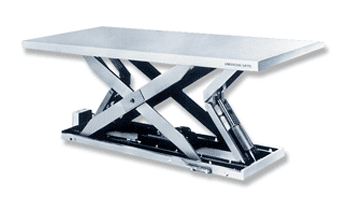 Hydraulic lift systems are used to raise, lower, support and move heavy objects or work surfaces. platforms like work surfaces. Typically, they‘re used in industrial and manufacturing settings, but they can also be used privately for accessibility purposes. There are many different kinds of hydraulic lifts. Examples include lift tables, scissor lifts, aerial lifts, platform lifts, vehicle lifts and pallet lifts.
Hydraulic lift systems are used to raise, lower, support and move heavy objects or work surfaces. platforms like work surfaces. Typically, they‘re used in industrial and manufacturing settings, but they can also be used privately for accessibility purposes. There are many different kinds of hydraulic lifts. Examples include lift tables, scissor lifts, aerial lifts, platform lifts, vehicle lifts and pallet lifts.
Lift tables are used to position work materials at an ergonomically beneficial access point to workers. Scissor lifts get their name from their base, which is crossed and stretches like an accordion when lifted. You can extend the platform or basket on the top of a scissor lift reaches the height you desire. Of course, scissors lifts can‘t extend indefinitely. Fortunately, aerial lifts, a type of scissor lift, can usually extend as high as you need. Typically, they can reach between ten and fifty feet in the air. Meanwhile, platform lifts, also known as elevated work platforms, are very large. Vehicle lifts, used in auto repair and inspection, are one of the strongest types of hydraulic lift. Pallet lifts, also known as transformers, are used to in warehouses to raise pallets during material handling and shipping applications. Learn more about hydraulic lifts.
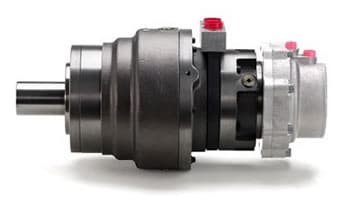 Hydraulic motors turn hydraulic pressure into a usable rotational energy that can be used with construction equipment, recycling processes, wheel motors, self-driven cranes, excavators, agriculture, conveyor systems, dredging and many other industrial purposes. Technically, because they convert pressure into rotational energy and torque, hydraulic motors are mechanical actuators. They are also the rotary counterpart of hydraulic cylinders. Broadly, they serve the aerospace, agriculture, automotive, construction, forestry, manufacturing, marine, military, oil and energy and waste management and recycling industries.
Hydraulic motors turn hydraulic pressure into a usable rotational energy that can be used with construction equipment, recycling processes, wheel motors, self-driven cranes, excavators, agriculture, conveyor systems, dredging and many other industrial purposes. Technically, because they convert pressure into rotational energy and torque, hydraulic motors are mechanical actuators. They are also the rotary counterpart of hydraulic cylinders. Broadly, they serve the aerospace, agriculture, automotive, construction, forestry, manufacturing, marine, military, oil and energy and waste management and recycling industries.
Types of hydraulic motors include: gear and vane motors, gerotor motors, axial plunger motors and radial piston motors. They offer different speed ranges, fluid distribution methods and more. Nevertheless, hydraulic motors usually consist of a reservoir, rotating machinery and a pump. Together, these components put into practice the principle of hydraulics. It says: most fluids cannot be compressed. Therefore, if a fluid is placed inside a closed system and force is applied to it, eventually, the force will push through the fluid to reach another point. Hydraulic motors store fluid in the reservoir. The pump forces this fluid out into the system using hydraulic pressure. Hydraulic motors generate a significant amount of power, especially when compared to other motors of similar sizes. Learn more about hydraulic motors.
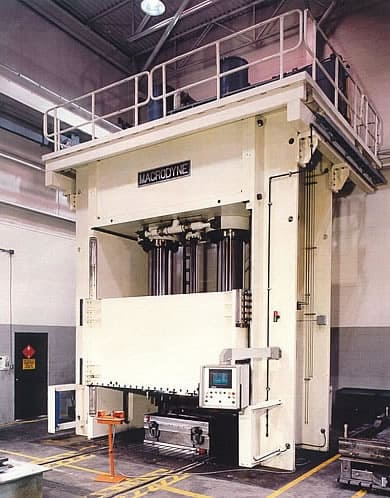 Hydraulic presses are presses that work by exerting hydraulic pressure, sometimes called fluid pressure, on an object. Because they can exert so much force, hydraulic presses are much more efficient that both mechanical presses and pneumatic pressures. They are very useful in applications such as clinching, molding, blanking, deep drawing forging, punching and general metal forming. In addition, they can be used to compact food and other consumables. Also, they can play a part in: making ceramics, making appliances, manufacturing electrical parts, manufacturing car parts, building aircrafts and more.
Hydraulic presses are presses that work by exerting hydraulic pressure, sometimes called fluid pressure, on an object. Because they can exert so much force, hydraulic presses are much more efficient that both mechanical presses and pneumatic pressures. They are very useful in applications such as clinching, molding, blanking, deep drawing forging, punching and general metal forming. In addition, they can be used to compact food and other consumables. Also, they can play a part in: making ceramics, making appliances, manufacturing electrical parts, manufacturing car parts, building aircrafts and more.
There are many different types of hydraulic presses available to those interested. Common hydraulic press types include: transfer presses, stamping presses, vacuum presses, platen presses, arbor presses, laminating presses, pneumatic presses, C-Frame presses, H-Frame presses, power presses and press brakes.
Because they are involved in such heavy duty applications and must endure such high amounts of shear force, hydraulic presses are usually made from durable materials like stainless steel. In addition, they can be set up for work with both single and multiple station designs. The single station design offers a single set of tools, while the multi-station design offers enough tools to take on a wide range of press operations. Learn more about hydraulic presses.
 Hydraulic pumps convert energy generated via pressurized fluids into usable mechanical energy. They are a key component of most hydraulic systems and they are found in a wide range of industries.
Hydraulic pumps convert energy generated via pressurized fluids into usable mechanical energy. They are a key component of most hydraulic systems and they are found in a wide range of industries.
All hydraulic pumps consist of a reservoir, tubes or hoses and a cylinder. The reservoir holds the stationary fluid. The tubes move this fluid to the cylinder, which is the main body of the pump. Inside the cylinder are two valves, located on opposite ends of the cylinder, and at least one piston or gear system. One valve is called the intake valve and the other the outlet valve.
The roles of the valves are to respectively let fluid in and out of the cylinder. The role of the piston is to move or compress fluid. When it withdraws, the inlet valve opens, creating a vacuum that pulls in hydraulic fluid from the reservoir. When it goes back to its original position, the inlet valve closes and pressure builds. The piston forces the valves open and closed repeatedly at variable speeds, building up pressure until it forces the fluid through the outlet valve. In this way, the pump delivers force and energy enough to the attached machinery to move its target load. Learn more about hydraulic pumps.
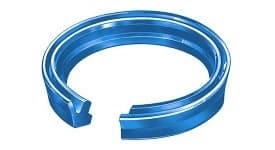 Hydraulic seals are a component of most hydraulic systems, in particular of their moving parts. Usually made of some type of soft, flexible elastomer that imparts them with exceptional water and air sealing capabilities, hydraulic seals are ring-shaped and designed to eliminate or limit the leakage of fluid being transferred within a hydraulic or pneumatic system. The elastomers with which hydraulic seals may be made include, among others, polymers, plastics, rubber, (PTFE) teflon, and polyurethane.
Hydraulic seals are a component of most hydraulic systems, in particular of their moving parts. Usually made of some type of soft, flexible elastomer that imparts them with exceptional water and air sealing capabilities, hydraulic seals are ring-shaped and designed to eliminate or limit the leakage of fluid being transferred within a hydraulic or pneumatic system. The elastomers with which hydraulic seals may be made include, among others, polymers, plastics, rubber, (PTFE) teflon, and polyurethane.
Industries they serve include aerospace manufacturing, agriculture, automotive manufacturing, chemical processing, defense contracting, food processing, marine products manufacturing, medical and pharmaceutical products development, nuclear power, pulp and paper, and waste disposal.
The applications of hydraulic seals are diverse and numerous. Hydraulic seals are found in brake devices, clean rooms, conveyors, mixers, presses, valves, and test equipment. Most often, though, they‘re found in hydraulic cylinders. Hydraulic cylinders are those mechanical actuators that are used to give unidirectional force to agriculture and forestry vehicles, construction equipment and the like, using oil, water, or another pressurized fluid. Learn more about hydraulic seals.
 Hydraulic valves are used to control the flow and pressure of flow within hydraulic systems. They make sure that the fluid within these systems moves safely, smoothly and in a controlled manner. Specifically, they can control the direction of the flow, the rate of the flow, the pressure of the flow and/or whether the fluid is flowing or not. They do so by opening, closing and partially obstructing passageways.
Hydraulic valves are used to control the flow and pressure of flow within hydraulic systems. They make sure that the fluid within these systems moves safely, smoothly and in a controlled manner. Specifically, they can control the direction of the flow, the rate of the flow, the pressure of the flow and/or whether the fluid is flowing or not. They do so by opening, closing and partially obstructing passageways.
Hydraulic valves can broadly be categorized into groups of: directional control valves, pressure control valves, flow control valves and proportional control valves. However, there are many, many individual valve types. These include: pressure relief valves, pressure regulators, sequence valves, shuttle valves, check valves, counterbalance valves, cartridge valves and auxiliary valves. Check valves are the oldest and simplest type of hydraulic valves. They stop, or "check," fluid flow in one direction.
You can get valves in a wide variety of sizes and mounting styles, such as: subplate mounting, mounting in pipe lines or flanged mounting. You can also request that your valves be up to ISO standards, though any good manufacturer will do this regardless. Learn more by reaching out to one or more of the excellent hydraulic equipment manufacturers below. Learn more about hydraulic valves.